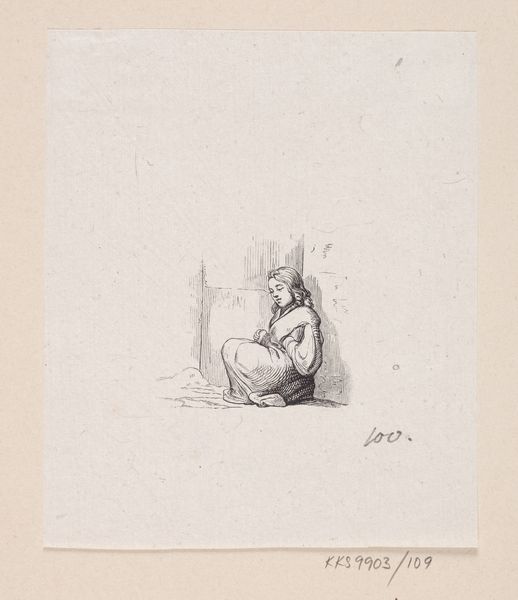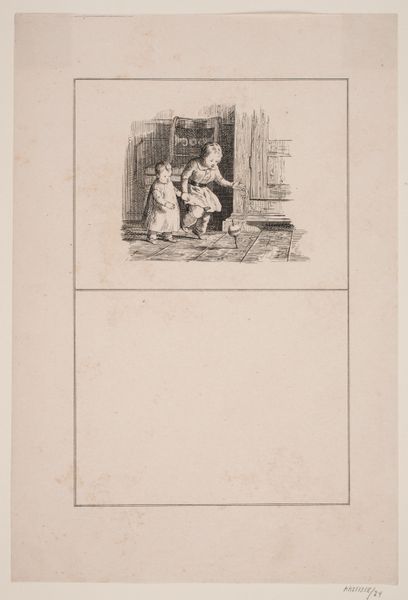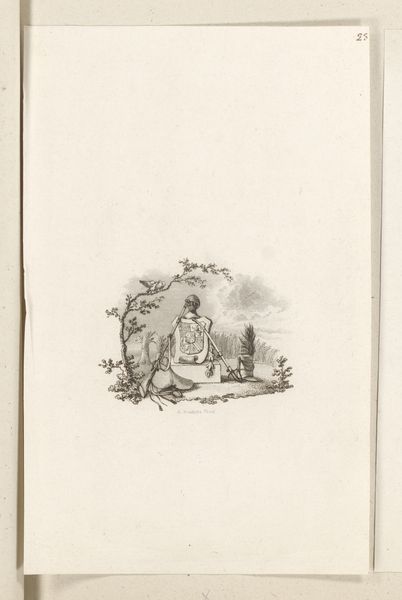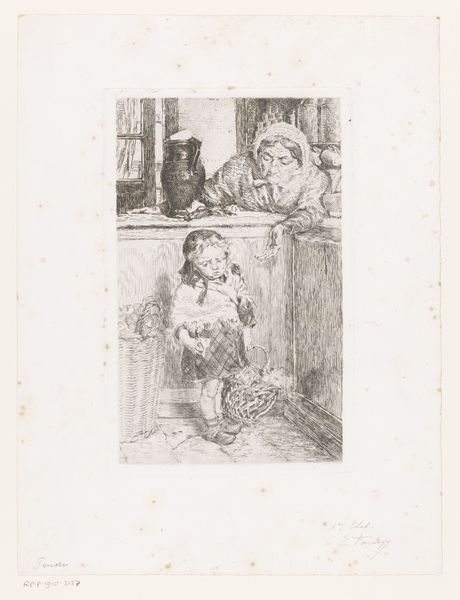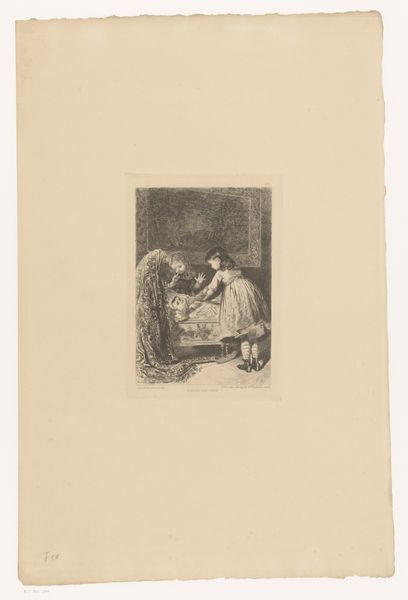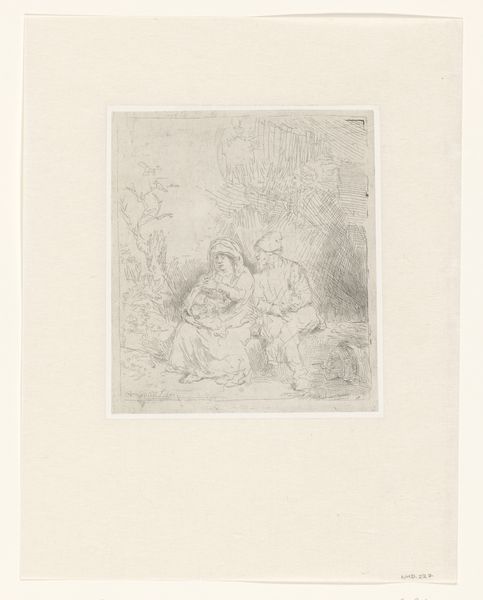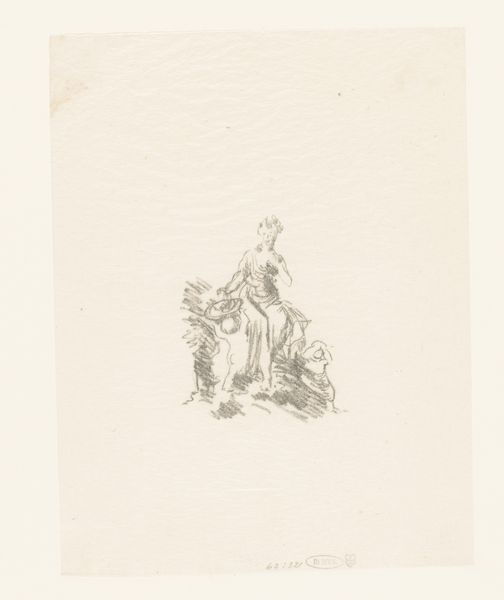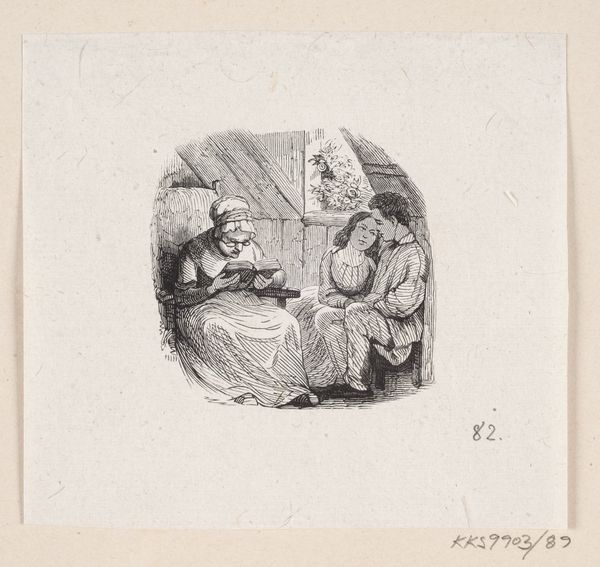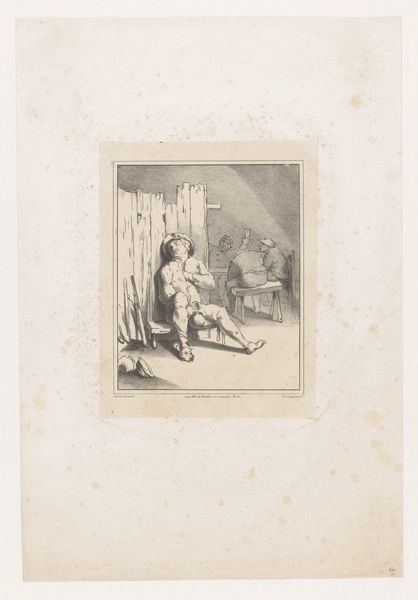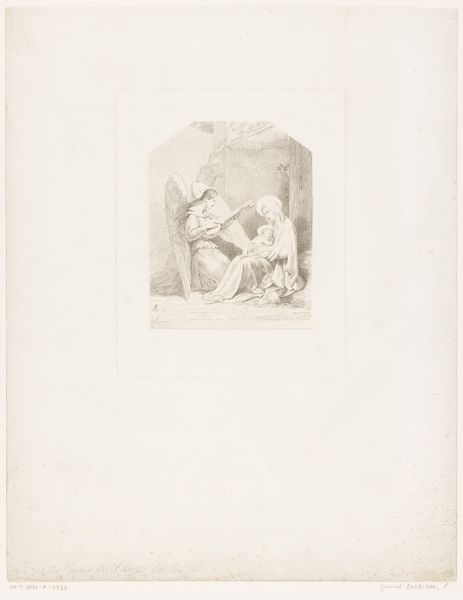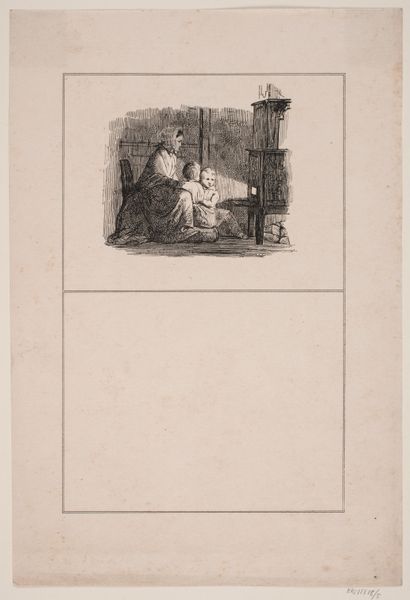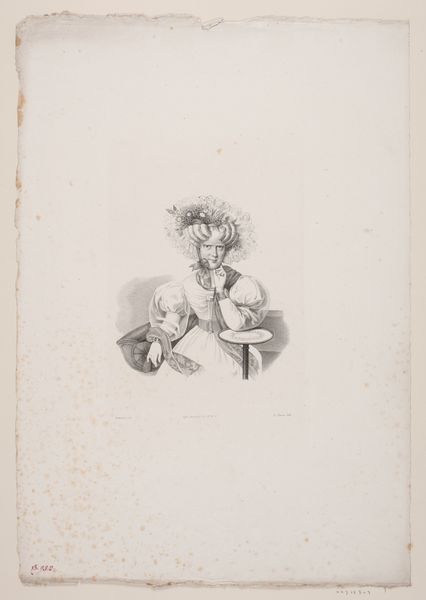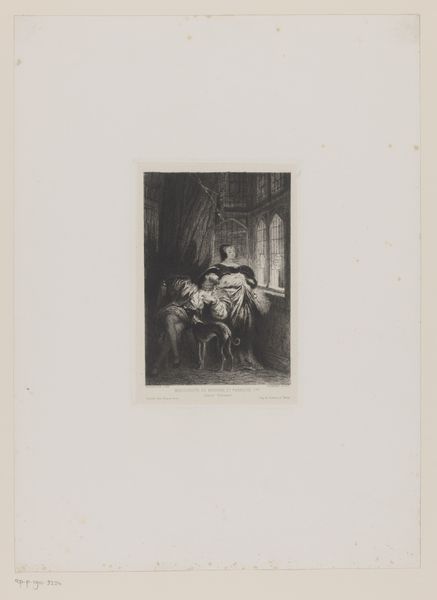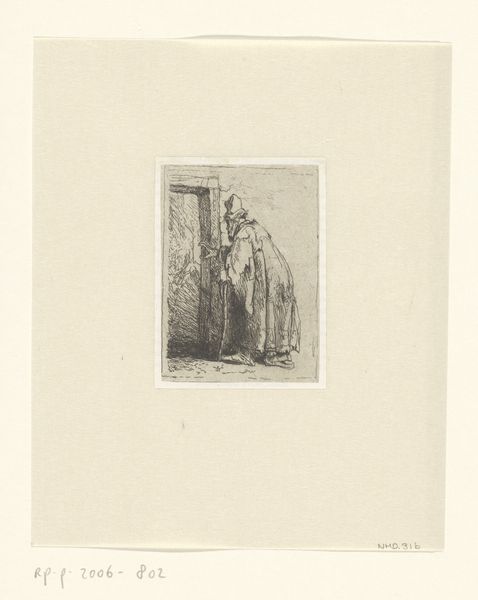
Illustration til "Lille Tuk" i H.C. Andersen, "Eventyr og Historier", Bind 2 1870 - 1873
0:00
0:00
drawing, print, paper, ink
#
drawing
#
narrative-art
# print
#
paper
#
ink
#
genre-painting
Dimensions: 139 mm (height) x 114 mm (width) (bladmaal)
Curator: This is an illustration by H.P. Hansen dating from 1870 to 1873, created as a drawing using ink on paper, intended for "Lille Tuk" in H.C. Andersen’s “Eventyr og Historier." It’s currently part of the collection here at the SMK. What are your immediate impressions? Editor: Well, the scene feels…intimate, almost like peeking into a quiet moment of domesticity. The limited palette, just ink on paper, focuses your attention. It’s humble, you know? But the details… the textures…they tell a silent story. It evokes this kind of comforting nostalgia, despite the limited grayscale palette. Curator: Nostalgia is interesting here. Andersen’s fairy tales were often quite radical for their time, critiquing societal norms. This drawing, then, offers a window into how those stories were visually interpreted within the prevailing social structure of the 1870s. Note the clear divisions, the roles assigned – do they speak to a specific power dynamic within the family and broader society? Editor: Power dynamic, right. The mother's seated, a little higher – clearly central. And the child offering something? It almost feels ceremonial, not in a grandiose way, but… important within their world. I can almost smell the chamomile tea. Curator: And the other girl standing back in the room—is she complicit, jealous, maybe just observant? I always ask myself how does Andersen’s text play into the lives of women and children at the time and then consider Hansen’s illustration as yet another interpretation. Editor: It's like she is on the periphery of their lives—an outsider in a sacred interior, which is kind of a stark observation about family dynamics. You bring up some interesting things, as I look at it—you feel like your place is already predetermined from the onset, even as children. How sad and very perceptive of you to point out! Curator: Art isn’t simply reflecting reality. It participates in it and at times like these the past informs how we can continue to reflect on it. It asks that we continue to ask, “Whose stories get told, and how?” Editor: Absolutely, I will definitely be mulling that over after this. So much weight packed into seemingly quiet spaces. Makes you wonder what's happening just outside the frame, right?
Comments
No comments
Be the first to comment and join the conversation on the ultimate creative platform.
